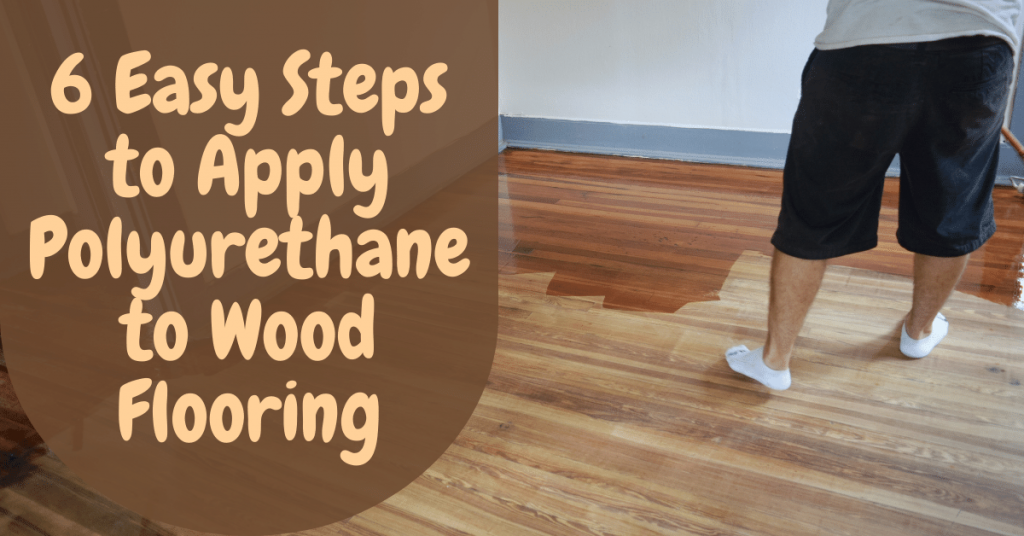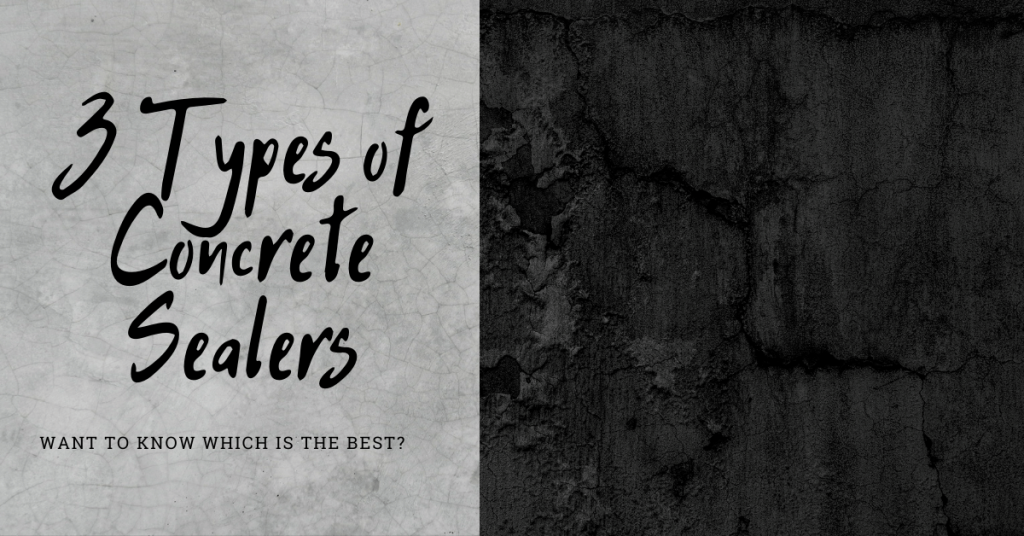Wooden floors are very common these days. They certainly add to the beauty of your room. However, wooden floors are also very delicate and susceptible to quick wear and tear. To protect wood floors against scratches, color fading, and dirt accumulation, you need to apply polyurethane coating.
Polyurethane is a synthetic chemical that reacts with visible light. It forms a coating on the surface to which it is applied. This coating acts as a protective shield that prevents decolorization, wear, and tear of the main surface. Polyurethane comes in form of a mixture either with water or oil-based solvents.
Whether you use oil or water-based polyurethane coating, it will protect your wood floor. You can apply polyurethane to your wood floor in these 6 easy DIY steps: acquire necessary tools, prepare the area, apply polyurethane, wait, recoat, and test the surface.

Two Types of Grout Sealers
Before I tell you how I apply polyurethane on my wood floors, it is important for you to know the pros and cons of different types of polyurethane coatings. The two types of polyurethane are different both in terms of their solubility and utility.
1. Water-based Polyurethane
Water-based polyurethane is expensive and requires more time to dry. However, it is less toxic, easy to clean and will keep the original tone of your wooden flooring.
Water based polyurethane has water as its solvent. It rarely reacts with the surface of wooden flooring. This keeps the wooden floor in its natural color and shine. Moreover, the coating formed is usually very thin. And in order to give more protection to the floor, often more coats are required.
More coats mean more polyurethane which makes it expensive to use. On an average, water-based polyurethane requires about 8-10 hours to dry. However, there are some options available in the market that take as low as 2 hours to get completely dry.
On the upside, water-based polyurethane is less toxic and it keeps the environment safe. Apart from this, it is also very easy to clean the floor protected by water-based polyurethane.
If you want to keep the original tone of your wooden floor, give importance to environment conservation, and want to make your floor easy to clean, pay some extra bucks and go for this option. This is the [amazon link=”B000BZYYH4″ title=”water-based polyurethane”/] that I would recommend you to get hold on:
[amazon box=”B000BZYYH4″]
2. Oil-based Polyurethane Coating
Oil-based polyurethane is relatively cheaper and durable. However, it can tarnish the original look of your floor, making it more difficult to clean
Oil-based polyurethane coating usually forms a thicker coating than its counterpart. It also forms a relatively harder protection around your wooden floor that makes it more durable. Since less of it is required to successfully coat the floor, it is on average cheaper than its counterpart. Moreover, it also takes less time to dry as compared with the water-based one.
However, oil-based polyurethane can pale with time as it reacts to sunlight. This can cause decoloration and harm the look of your floor. Moreover, oil as a solvent makes the coating toxic as well. Apart from this, it is also hard to clean any surface protected by oil-based polyurethane. Water cleaning won’t be enough, and you may need some citric-based wiping to clean the spots from the floor surface.
If you want a coating for your wooden floor that is cheaper and more durable, go with this option. But it is advised to keep the downsides of it in mind as well. [amazon link=”B000VZLF58″ title=”Here”/] is where you can get the best quality oil-based polyurethane coatings for your wooden flooring:
[amazon box=”B000VZLF58″]
6 Easy DIY-Steps to Apply Polyurethane to Wood Flooring
Now that we know different types of polyurethane coatings, let me tell you 6 easy steps. I follow these stops to protect my wooden flooring.
1. Acquire Necessary Tools
Apart from getting hold of the desired coating, you will also need a few tools during application stage. First and foremost, you will need a sander. A sander is a device that will help you to smooth the wood flooring. If you want to get a sander, [amazon link=”B00MLSS1SW” title=”here”/] is where you can get one:
[amazon box=”B00MLSS1SW”]
PRO TIP
Only get a sander if you plan to frequently coat your wooden floor.
In order to use a sander, you will also need sandpaper. Make sure you have 100 and 220 grit sandpapers to make your floor ready (use 100 grit) and to use them to smoothen the surface after the first coat (use 220 grit). [amazon link=”B00004Z48U” title=”Here”/] is where you can get both these grits:
[amazon box=”B00004Z48U”]
PRO TIP
Use 100 grit sandpaper to get your floor ready for the 1st coat. Use 220 grit sandpaper to get the wooden floor ready for 2nd coat.
In addition to this, do not forget to get hold of polyurethane rated rollers to apply the coats. [amazon link=”B000RUOEBO” title=”Here”/] is where you can get it:
[amazon box=”B000RUOEBO”]
2. Prepare the Floor
Now that you have everything you need to coat your wooden floor; it is time to prepare the floor. Obviously, you have to empty your room to free up space for this task.
After emptying the room, you can prepare the floor for the first application of the coat. In order to do so, you have to place 100 grit sanding paper in the sander. Once this is done, turn the sander on and start sanding the floor. Make sure you sand every part of the surface. Once you are done, touch the floor to check and ensure it is clean and smooth.
PRO TIP
Use the sander for equal durations at different spots on your floor. This will keep the surface looking homogenous.
3. Apply the First Layer of Coat
Now comes the real deal: the application phase. In this phase, you have to apply the first coat on the wooden surface. And guess what, you are already doing it yourself! Isn’t that amazing?
You have to dip the roller in polyurethane. Wait for the roller to shed its last tear. Once that is done, apply the coat with an even hand. Trust me, with all this hard work, you won’t want to miss even a single corner.
PRO TIP
While applying the coat, it is important to keep your hand even. In other words, you need to apply equal amounts of polyurethane across the floor surface.
4. Wait for the First Coat to Dry
After you have successfully completed the first coat, you need to dry the floor surface. Depending upon the type and manufacturer of the polyurethane, it can take between 2 and 12 hours for your floor to get completely dry. Another important factor that can speed up or slow down the drying time is the airflow and ambient temperature of your room.
You know your room better. You probably have an idea about its airflow. As far as standard drying time is concerned, it is often mentioned on the box of your polyurethane so do not forget to check it.
PRO TIP
Let your floor dry completely after the first coat or otherwise marks of any movement will permanently be on your floor.
5. Re-coat the Floor Once It is Dry
After a thorough drying, it is time to recoat. Yes, you heard it right. To get better results, you would want to coat your floor at least twice.
If you are using water-based polyurethane on a rugged floor, it may even need more coats. The number of coats required will become apparent once it dries. If it doesn’t have a satisfactory look, you need to add another coat. So, do not worry much about this step.
PRO TIP
For almost 90% of the cases, the wooden floor requires only two coats.
6. Test the Floor
After you have let the floor dry, it is time to test your work. The best way to check whether your coat is working is to put some water on the floor. If your floor does not absorb it, then the coating is working fine. The water must stay on the floor surface or you need to apply polyurethane coating more thoroughly in some areas.
PRO TIP
Make sure you start the test only after the last coat has dried. Don’t hurry – haste can cause waste!
Conclusion
There you go! You have done it. You have just coated your floor with polyurethane which will protect it for at least two years. After that, it is advised that you redo your coating.
Isn’t it amazing that you coated your wooden flooring all on your own? You just followed these 6 easy steps: acquire the right tools, prepare the floor, apply the first coat, wait for the coat to dry, re-coat, and test whether the coat works fine.
Want to know how to seal concrete floors? Check this post about concrete floor sealers!
3 Types of Concrete Sealers. Want to Know Which Is the Best?
Concrete sealers give life and shine to your floor. But have you ever got confused in picking one for your floor? If you did, I will help you in knowing the differences between concrete sealer variants.

